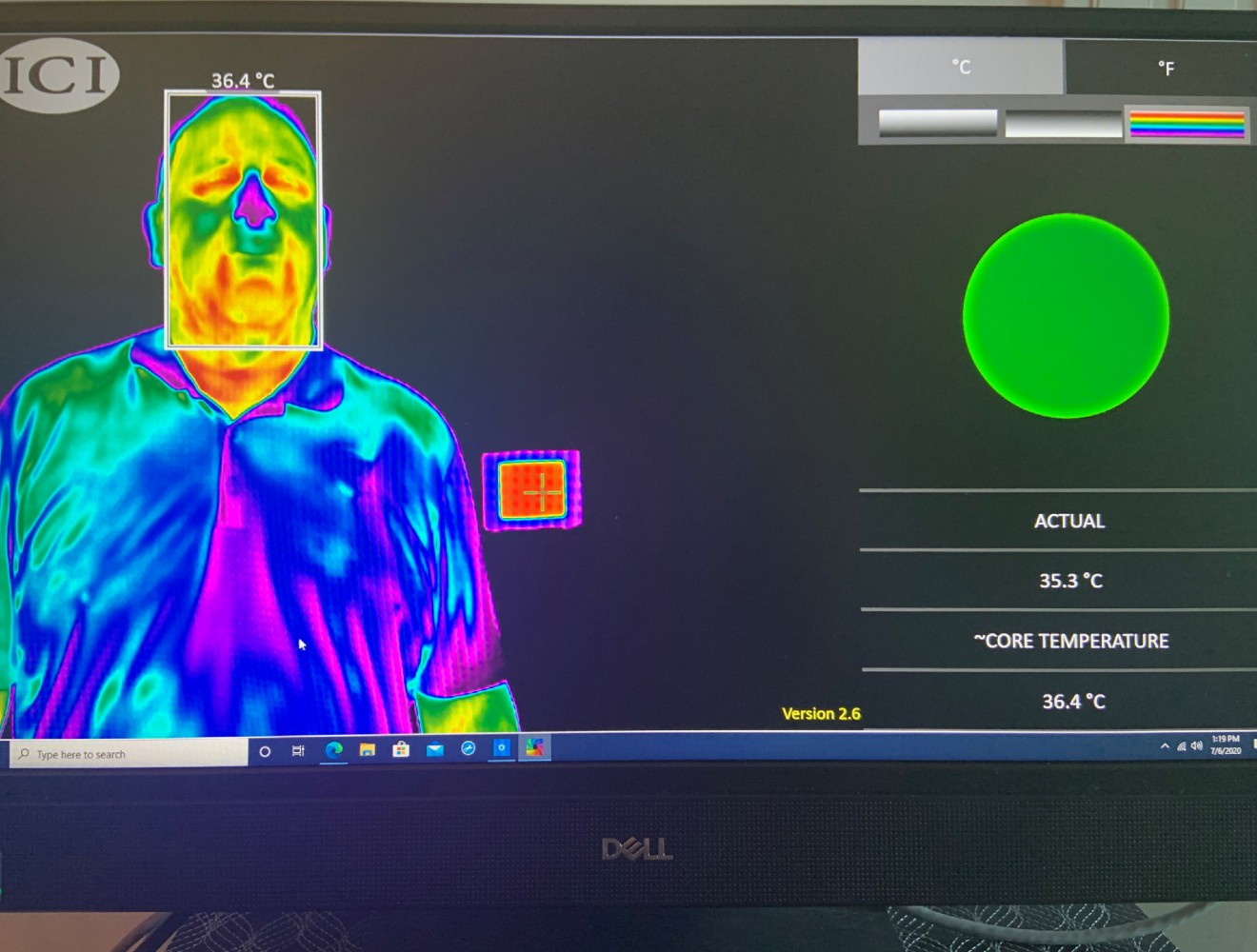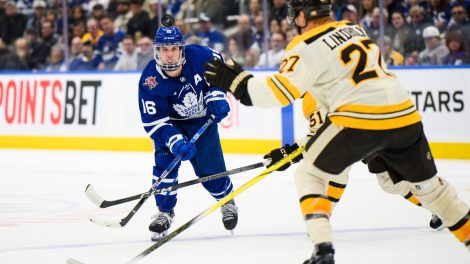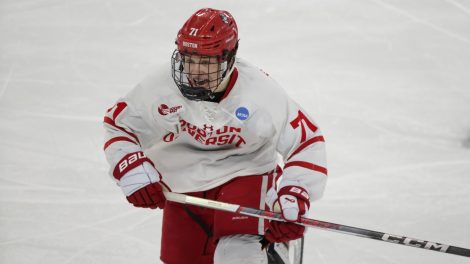Eleven weeks ago, after NHL Commissioner Gary Bettman informed the Board of Governors a new CBA with the players was a priority, several teams discussed what they’d like to see addressed.
Their suggestions, officially submitted by the Winnipeg Jets, offered ideas on everything from salary arbitration to contract structure to long-term injury reform.
“It was an excellent memo,” one team executive said Saturday. “Very thorough. A lot of great ideas.”
Almost none of them were used.
“Gary and (Deputy Commissioner) Bill Daly were very clear,” an NHL owner said after the Memorandum of Understanding was ratified Friday night. “They told us, ‘This is a crisis. We are going to have to think big picture.’ And that’s what they did.”
“I think (NHLPA Executive Director Don Fehr) and I both recognize labour peace was something we couldn’t even quantify how important it was,” Bettman said during a Zoom call on Saturday. “But we both knew that for the business of the game to come back strong, there was enough disruption going on in the world that we didn’t have to add to it.”
“We were stuck in this morass,” Fehr added. “Our task was to persevere until we did it… I was persuaded well before the end of March that not only was this different, but it was being approached in a fundamentally different way.”
Labour peace in this league doesn’t come easy, which led to a lot of social media jokes about needing a pandemic for it to happen. But sources on both sides said it became clear that, no matter what obstacles or objections arose, NHL and NHLPA leadership believed the best thing for both players and owners was to find common ground. They were going to do everything possible to avoid a financial Chernobyl.
[snippet id=4931344]
When conversations began, the NHL and NHLPA understood that, without a new deal, both sides were looking at a 2020-21 salary cap in the $65 million range and escrow anywhere from 35-70 per cent (it can be adjusted upward during a season if revenues are low). That was a guarantee, since the league has indicated a season without fans could erase 45 per cent of its revenue. At one point, the players suggested dropping the cap from its current $81.5 million, but the league countered by saying it wanted a salary clawback as part of that. The updated document will keep the ceiling at $81.5 million until revenues reach $3.3 billion, with room for minimal increases afterwards. Escrow will start at 20 per cent, dropping to six by 2023-24.
The two sides also had to navigate Paragraph 17 of the Standard Players’ Contract, which details what happens when, “because of any condition arising from a state of war or other cause beyond the control of the League or of the Club, it shall be deemed advisable by the League or the Club to suspend or cease or reduce operations.” The pandemic sure qualifies, and the clause allows for a player’s salary to be reduced, or in an extreme scenario (cessation) cancelled.
“(The NHL) never threatened us with this,” one player said, before laughing a little. “But we knew it was there.” Another said the possibility was raised that if a return to play wasn’t attempted, the financial damage would be so great that the NHL wouldn’t resume until a vaccine existed.
Whatever the case, it was one of the final issues to be settled, with the league agreeing to limit its use of this clause through the end of the 2020-21 season. One team executive said he was surprised at that concession, but it shows how important a deal was.
One of the biggest challenges was fatigue. With no face-to-face meetings, both sides grinded away via telephone or Zoom. There were long days and late nights. “While things were going in the proper direction,” one source said, “You worried about some small thing becoming a big problem because everyone was tired.”
In the past, Bettman and Daly would invite others to be part of the bargaining team. This time, they basically made it a two-person operation. The Board of Governors unanimously voted to approve the new framework, but that doesn’t mean everyone was happy. Several teams were upset that arbitration, in particular, was not fundamentally changed. The flat cap has general managers sweating painful roster decisions to come.
But Bettman and Daly had a priority and stuck to it.
“Their key was cash flow to get through the pandemic — and out of it,” another owner added.
Fehr and fellow NHLPA executive Mathieu Schneider had higher internal hurdles. While some owners wanted greater change to the guts of the CBA, it is very rare for Bettman to lose their support once he chooses his strategy.
Fehr’s constituency was much more divided, which is understandable since they’re the ones who have to play through this. Athletes are creatures of habit. This is not when hockey players are used to competition. This is their time for relaxing, recovering, golfing, travelling, barbecuing, getting married and/or having babies. It’s hard to pin it down to exact numbers, but some made it clear they preferred waiting until September to return. Epidemiologists for both the NHL and NHLPA advised against this strategy, for fear of a second COVID-19 wave in October.
Families were concerned about time apart and health risks. Europeans, watching what was happening in the United States, made it clear they weren’t thrilled about returning. St. Louis and Tampa Bay shut down Phase 2 for a few days.
With only two years remaining in the current CBA, some agents wanted Fehr to take a more aggressive approach, feeling players would never have more leverage than they did now. “I feel we shouldn’t make a deal,” one player said privately in May. “Let’s rip off the (escrow) Band-Aid, take the pain, and see what we can do.” But that philosophy was far from unanimous, and there are hard-core, nasty battle lines among the different agencies. The largest ones, however, stood behind Fehr, which stabilized the waters. Allan Walsh, unafraid to be outspoken, made sure to tweet his support once player voting began.
There were tense conference calls. A number of the defending Stanley Cup champion Blues were vocal. The Canadiens had a heated one with NHLPA leadership.
“When I saw the Instagram post of Carey Price going to Montreal,” one player said, “that’s when I knew we were going to play.”
During another, a player asked Fehr what he liked — and didn’t like — about the new CBA.
“That’s a Barbara Walters question,” he answered.
In a separate interview, Fehr said, “You don’t want to answer questions about the agreement by focusing on emotional things. You have to analyze free from emotions, and the agreement has to be judged as a whole, not on individual parts. You can always find something you like or don’t like, but the question is whether you approve of the whole thing.
“There’s a wide divergence of opinion (among the players). Over time, you throw away some options and work on others, the process takes as long as it takes… but you have to go through that process. We talked about things long enough, eventually you go with what the majority agree with. Once we reach an agreement, I was very clear to the membership that I believed agreeing to the MOU was the proper way to proceed.”
In March, the NFLPA agreed to ratify its new CBA with the NFL by a vote of 51.5 per cent to 48.5. I remember talking about that with a few hockey agents. They didn’t like how close it was, saying, yes it’s a majority, but it’s not a “real mandate.” There was worry the NHLPA vote could be similar.
There’s no question the penalty-free opt-out was critical. After that was announced, predictions of ratification became much more confident. Some wanted to see if changes could be made (a tweaking of escrow percentages was one suggestion), but, with time running out, Fehr recommended the players accept the deal.
In the end, the executive board voted 29-2 (Carolina, Chicago dissenting) to accept the CBA/Return to Play Protocols. In the player-wide vote, 79 per cent said yes.
SO WHERE DO WE GO FROM HERE?
Hockey’s new framework has caps on escrow and Olympic participation, both important to union membership. Salary arbitration is untouched. Signing bonuses were untouched. Several players indicated they were pleasantly surprised at some of the “small things” that benefit them, including more powerful no-trade/no-movement clauses.
In exchange, this deal could crush free agency. Several GMs said they don’t expect cap movement for years. That’s why people on both sides weren’t thrilled to see the minimum salary go up, thinking it will add to the squeeze.
Teams tight to the cap will have difficult decisions to make. Will teams with room choose not to spend to save cash flow? For example, Buffalo has a ton of space but players to sign. Ownership is cutting costs, what’s the vision? Ottawa also has a ton of flexibility, but owner Eugene Melnyk is on record as saying his cap spending years weren’t scheduled until 2021-22.
We’re going to get indications of where this will go pretty quickly. Key unrestricted free agents this off-season include Alex Pietrangelo, Taylor Hall and Torey Krug. Among the key restricted free agents who can sign extensions are Quinn Hughes and Elias Pettersson. How will they — and their teams — navigate this?
(Personal aside: I would have loved to see a luxury tax, where clubs were given the option of going over the cap — getting a dollar-for-dollar penalty that could have been redistributed through revenue sharing. Give the clubs the option to spend, if they wanted. Some clubs would have screamed murder, but the businessman in me thinks letting your financial powerhouses flex their muscle would help the NHL out of the pandemic’s mudhole.)
It hasn’t received a lot of attention, but the league did get a small “win” on qualifying offers, which is the minimum a team must give to retain the rights of an RFA with an expired contract. Last summer, four key players — Brock Boeser, Timo Meier, Brayden Point and Matthew Tkachuk — signed bridge deals that were set up to generate a high such offer. Meier’s would be the highest, at $10M. The advantage for the team is that it can use term to lower the average value.
As the contract concludes, if the player doesn’t like what’s being offered on a long-term basis, he can accept the big qualifying offer and increased leverage as he approaches free agency. The new rule helps teams a bit by limiting the “QO” to 120 per cent of the AAV. For example, if he’d signed his current extension under the new rules, Meier’s number would drop from $10M to $7.2M.
The biggest challenge now is growing revenue. A couple of executives said they were struck by one particular segment of the new CBA framework — the escrow calculation for the 2021-22 season. It reads, “14% if Preliminary (Hockey Related Revenue) for the 2020/21 League Year equals or exceeds $3.3 Billion; 18% if Preliminary HRR for the 2020/21 League Year equals or is below $1.8 Billion; pro-rata rate in between $1.8 Billion and $3.3 Billion.”
Seeing a number as low as $1.8B? That’s a shock. In fact, the NHL has the option in this deal to modify existing revenue-sharing rules. Under the previous agreement, major market teams like Anaheim, Dallas, New Jersey and the Islanders could not qualify for full revenue-sharing. Now, they can.
A lot of the focus will be on the upcoming U.S. television contract. There was a ton of optimism for a significant rise from the current $200M/year deal with NBC before the pandemic. Now, we’ll see how (or if) the landscape has shifted. Having Olympic participation certainly helps, as NBC wasn’t thrilled NHLers weren’t in South Korea.
But I’m also curious to see where Bettman lands on one other issue: jersey advertising. Spoiler: he’s against it. He has said before that it would take a huge number to get him to consider it. I’ve been surprised over the years at the amount of support he has from people who would happily sell anything else that wasn’t nailed down.
Desperate times, however.
RETURN TO PLAY
You’ve probably heard this a million times in the last 48 hours, but the NHL and NHLPA believe in their bubble. Time will tell, but they’re testing everyone who will be inside and doing whatever it takes to keep things tight.
One company, ICI, did a demonstration for me of their technology, which quickly scans for elevated body temperature. (This would be in addition to regular testing.)

This is an “Infrared Thermal Camera.” Someone stops for two seconds, and it takes their temperature.

The key item on the screen is the green dot. For the purposes of this test, the camera was set at 99.5 degrees Fahrenheit. If the person’s body temperature is below that setting, you get the green dot — a pass. If 99.5 or higher, it’s a red dot, or a fail, which triggers the need for a secondary, more in-depth screening. (The baseline can be adjusted to whatever number the user wishes.)
But… there’s two weeks before we get there. Two teams train in Florida, one in Arizona, one in Texas. The numbers in those states are staggering. The vulnerability is much greater in Stage 3. There were some conversations about moving out of those states, but one objection came from players feeling they were already being asked to spend enough time away from their families.
Sources indicate that, two weeks ago, there were 13 different teams with at least one positive COVID test. Teammate Chris Johnston reported Friday that “the coming days are going to be quite difficult because we’re going to start to learn about a higher number of positive tests. I’m led to believe that a higher number of players who have come back and started testing in the last few days… have already produced positive results.”
It will be interesting to see how demanding players are of each other to be smart. When Vancouver’s Jake Virtanen showed up on Instagram at a Vancouver club, it annoyed coaches/staff from other teams who could be in the bubble with the Canucks.
Who knows where this goes? In these times, the truth today is not necessarily the truth tomorrow. Things change quickly and unpredictably. One quote, however, stood out to me.
“This is going to be the worst year ever to lose the Stanley Cup Final.”
[relatedlinks]









